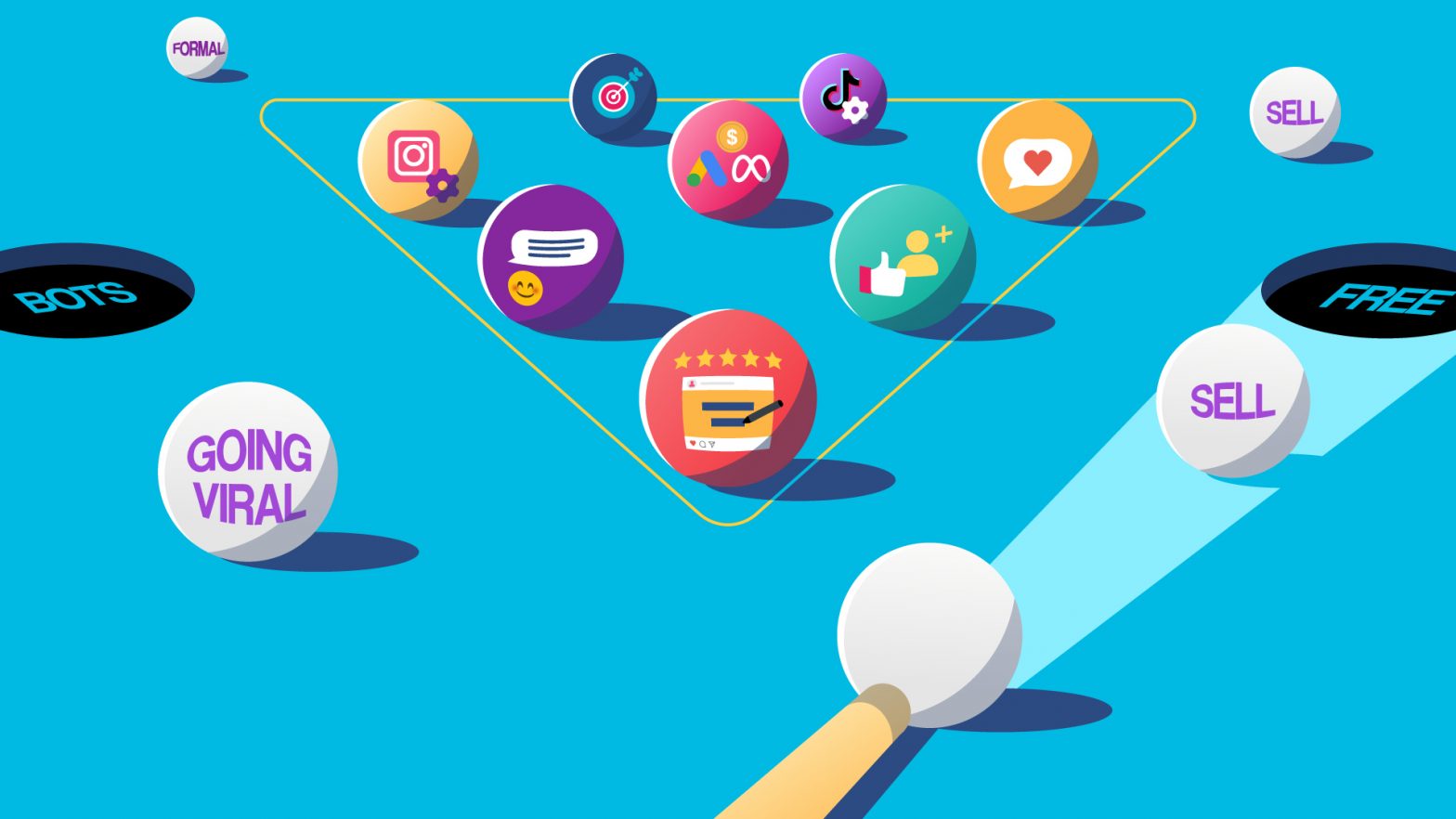Isn’t it frustrating when you share great visuals and engaging posts but see little return? You’re not alone. Unfortunately, many businesses face the same challenge.
If you’ve invested time and budget in social media without seeing a real impact, something must have gone wrong. One possible reason is that you haven’t used social media analytics effectively.
In fact, 85% of marketers notice a direct rise in ROI from their analytics work. These tools show what works for your business and what does not. They assist you in understanding your audience, tracking performance, and modifying your approach.
Let’s explore social media analytics, its advantages, and how it helps make more intelligent marketing choices. Shall we begin with the basics?
What is Social Media Analytics?
Social media analytics collects and studies data from social platforms. This data reveals how users respond to online posts, items, and names.
It can be said to be a tool that “listens” to what individuals express on sites like Facebook, Instagram, TikTok, Twitter, and LinkedIn.
It informs us which posts users enjoy, which ones they overlook, and how they feel about specific subjects.
Businesses can uncover insights by observing likes, shares, comments, and even emojis.
They can discover what their clients prefer and don’t, which helps them upgrade their offer to fit their audience’s desires more accurately, and even tailor their approach by offering a thoughtful business gift to enhance customer relationships.
Understanding your audience means choosing wisely. It’s like having a dialogue with your clients, but instead of spoken words, it’s all represented through data.
Types of Social Media Analytics
To understand social media inside and out, you must first understand its different types. Here are the four main types:
#1. Descriptive Analytics
Descriptive analytics explains what occurred. It provides simple figures, such as the number of likes, shares, or followers on a post.
Think of it as a summary. Here, you will learn about the growing trends, like what’s popular and what’s not.
#2. Diagnostic Analytics
Diagnostic analytics gives a more detailed view than descriptive analytics. It will tell you why something happened.
For example, suppose you post two posts in one day, but you get more likes in one and fewer in the other.
Then, with the diagnostic analysis, you can learn why certain topics are getting likes and others are not.
#3. Predictive Analytics
Let us understand this with an example: A shop studies past holiday sales records and elements like weather and social media patterns to guess which things might become popular.
With these details, the seller chooses the correct items to have in store and avoids having too many or running out of top-selling goods.
So, predictive analytics uses past business data to predict future trends and customer liking.
This way, you can plan your next move, such as what type of post will work best next month.
#4. Prescriptive Analytics
Prescriptive analytics gives advice. It tells you what actions to take. For example, prescriptive analytics might suggest posting more videos if your data shows that videos perform well.
This helps turn data into a clear action plan. Each analytics is essential to understand the brand and serve the audience what they love.
Why is Social Media Analytics important?
There are many reasons analytics is important for social media marketing. We’ve listed four benefits you can get with analytics.
Improves Audience Understanding
Social media analytics helps you learn who your audience is. What age are they? Where do they live? What do they like? This info is valuable for creating content that speaks to them.
Improve Customer Service
Analytics can help you spot problems early. If people complain about a product, you’ll know right away. This allows you to respond faster and keep customers happy.
Stay Ahead of Trends
Social media moves fast. Helpful data and analytics can help you foresee upcoming trends and understand what customers enjoy. New trends come and go, and it’s important to use analytics to spot changes early.
Prove ROI
Want to know if your marketing is working? Social media analytics can show the results.
You can see how many people clicked on your posts or bought products after seeing an ad. This helps prove that your efforts are paying off.
Strategies to Make Smarter Decisions with Analytics
Other than this, you must follow some essential strategies to make smarter decisions. We’ve rounded some for you!
Spotting Trends
Your brand will only go viral if it’s trending and suits the latest customer’s mind. Obviously, who will buy a product or service that is outdated?
Using social media analytics, you can find relevant trends for your business. Hence, plan content that matches what people want to see right now. This keeps the brand fresh and exciting to its audience.
Examples of trends that analytics can spot:
- Popular Platforms: Which social media platforms are people using more? Is Facebook slowing down while TikTok is growing?
- Hot Topics: What topics are people talking about? What keywords or hashtags are trending?
- Types of Content: Do people want more videos, images, or articles? Analytics can show which format works best.
Understanding Brand Sentiment
Brand sentiment is how people feel about your brand. Are they happy, angry, or neutral? Social media analytics can measure this.
People who love your brand would love to keep shopping with you. But just one negative experience might make them doubt buying things again from you.
Brand sentiment helps you monitor this. By fixing problems early, you can keep your customers happy.
Measuring Value Perception
Value perception is how valuable your service or product is to the customers. Social media analytics can help you understand this perception.
A great example is that the iPhone is expensive compared to all mobiles, but people still prefer buying it.
Why? Because it adds value by offering security and other advanced features. This shows customers are willing to pay more if the product is worth it.
Analytics data helps you understand what people like or dislike about your product, so you can adjust it and meet customer needs.
Setting Realistic Social Media Goals
Because people love real stuff, analytics helps to set realistic goals. Hence, you can make sure that your social media efforts are clear and measurable. Social media goals you can set with analytics:
- Follower Growth: If you’re gaining 20 followers per week, maybe aim to reach 30. This way, your goal is achievable.
- Engagement Rates: Look at likes, shares, and comments. Set a goal to increase them by a small percentage each month.
Final thoughts
With more apps being used, many app development companies in the USA and other regions now consider social media analysis a key part of their business.
Simply being on social media is not enough. Knowing what works and what people might enjoy next is crucial to retaining customers.
Social media analysis gives a clear guide to running the business smoothly and helps choose what satisfies customers.
Understand your audience and choose what helps your brand expand. Social media is not just for posting. Instead, it’s a place to learn and improve.








